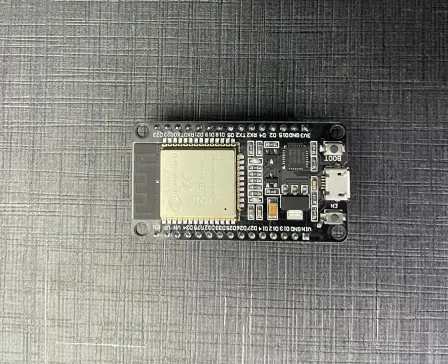
Smart lighting solution with EzloPi!
Boost LED intensity and monitor via TLS256 light sensor
The EzloPi smart devices provide automation through simple, customizable use with our open-source EzloPi platform, making daily life easier and improving human-machine interactions.
Before moving into this example, it is very important to know about the device registration, provisioning and converting the ESP32 device into an EzloPi device along with knowledge of Web Flasher, MiOS Mobile Application for Android/iOS and the MiOS Web Application.
1. About this example
This project aims to enhance LED intensity dynamically based on ambient light levels using the TLS256 light sensor integrated with the EzloPi device. By leveraging the EzloPi's capabilities, this system monitors environmental brightness in real-time and adjusts LED output accordingly, ensuring optimal illumination in various conditions of our smart home environment. This solution not only improves energy efficiency but also enhances user experience by providing adaptive lighting.
With the TLS256 sensor's precision and the EzloPi platform’s flexibility, our project offers a scalable and customizable solution for diverse applications, from smart home lighting to industrial settings.This integration will empower users to create dynamic lighting environments. Through the MiOS app, users can remotely monitor the light intensity on the MiOS application dashboard.
2. Project Video Demonstration
Welcome to the project demonstration video section. The following video showcases the key aspects of Boost LED intensity and monitor via TLS256 light sensor, providing a visual walkthrough of its implementation.
3. Circuit Setup & Interfacing
The following components are required for interfacing with the EzloPi device:
- ESP32 as an EzloPi smart device.
- TSL2561 Luminosity sensor.
- LED with a current limiting resistor of 110 Ohms.
The wiring diagram of ESP32 30 pin is represented as follows:


The following connections are made in order to complete the circuit setup:
From ESP32 to the TLS256 Luminosity sensor:
| ESP32 | TSL2561 |
| 3V3 | Vin |
| GND | GND |
| D21 | SDA |
| D22 | SCL |
From ESP32 to the LED & Resistor:
| ESP32 | LED | Resistor |
| D4 | - | 1st Terminal |
| D4 | - | 1st Terminal |
| GND | Cathode | - |
| - | Anode | 2nd Terminal |
4. Interfacing the Light/Luminosity Sensor (TSL2561) using the EzloPi Web Flasher
1. Set up your device/hardware by visiting config.ezlopi.com
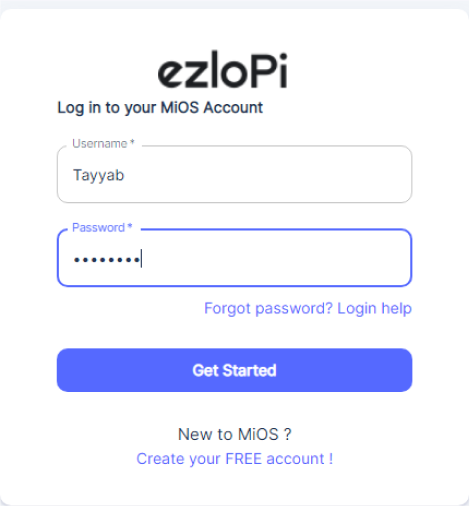
- Log in using the credentials which you just set earlier while signing up.

- Now, click on the Connect Device button and a pop-up window will appear.

Now, select COM Port to which your ESP32 device is connected. In our case, the COM3 port is used.
Click Connect.

- If you are new to this and it's your first time configuring, select Create new Device ID. Enter Wifi SSID and Wifi Password.
- In the Device Configuration, tab click on PWM.

- A PWM window will open for inputting the following parameters:
- Set a Device Name of your choosing. In our case, we set it to Dimmer.
- Set Device Subtype to Dimmable Lamp.
- Set the PWM_GPIO to 4.
- Set the Resolution to 8 bits.
- Now, Click the Apply button.
- After clicking the apply button you can see a table of your setting in the device configuration tab.
- Press the Flash Device button.
- Again, In the Device Configuration, tab click on I2C.

- A I2C window will open for inputting the following parameters:
- Set a device name of your choosing. In our case, we set it to Luminosity Sensor.
- Set Device subtype to TLS256 Luminosity.
- Set Slave address to 57.
- Set SDA pin to GPIO21.
- Set SCL pin to GPIO22.
- Now, Click the Apply button.
- After clicking the apply button you can see a table of your setting in the device configuration tab.
- Press the Flash Device button.
- A window will appear on the bottom right side of the screen displaying “Please press BOOT button while flashing begins.”

- Hold the BOOT button down until the next window appears on the bottom right side of the screen which says “Installation prepared. Please release the boot button now.”

- Release the BOOT button from your ESP32 when this pop-up on the bottom right window appears.

- After some time, a popup will appear saying Device Flashed Successfully! This means that your device has been set up successfully.
6. MiOS App
You can download the MIOS Android app from the Google Play Store and Apple App Store.
- After downloading the app, proceed to install the application and open it.
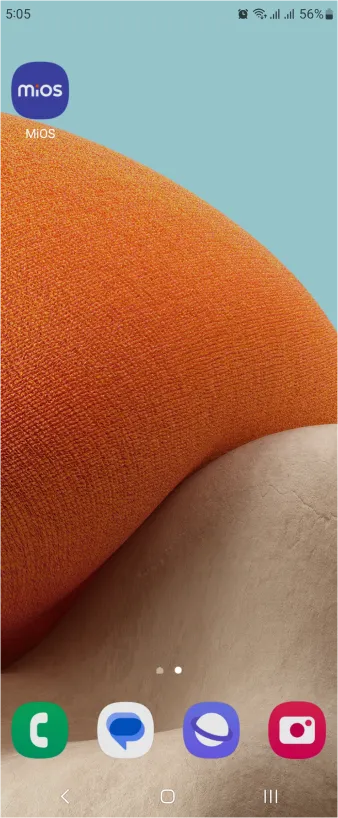
- Using the MIOS mobile application, create a new Ezlo Cloud account using the sign-up option. If you already have an account, you may proceed to log in.
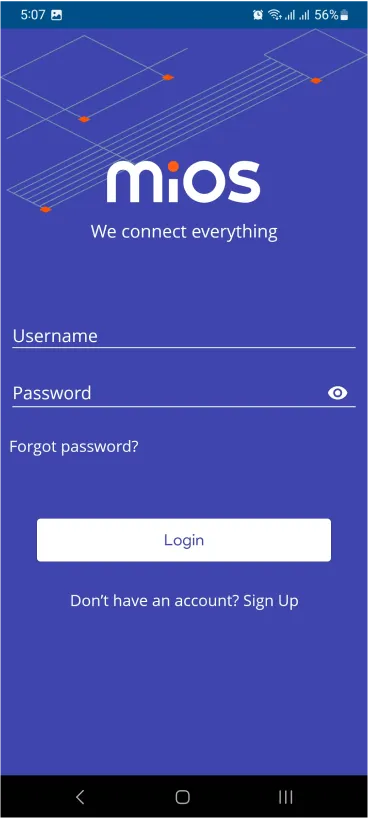
- After successfully logging in, you will be able to see the number of controllers connected such as a lamp, fan, or any other device in the MiOS app. Tap on any controller of your desired ID:

- You will be able to see the status of your controller whether it is online or offline. Access the device dashboard, and tap the device. The following view of the dashboard will appear:

- Here, we can see the Luminosity sensor and dimmer tile in the MiOS mobile app above. The above figure indicates that very little amount of light is being detected by the sensor as the intensity of light is controlled using the slider as seen above.

- Here, we can see the Luminosity sensor and dimmer tile in the MiOS mobile app above. The above figure indicates that a high amount of light is being detected by the sensor as the intensity of light is controlled using the slider as seen above.
5. MiOS Web Application
- After configuring the controller with the EzloPi web flasher, head to ezlogic.mios.com
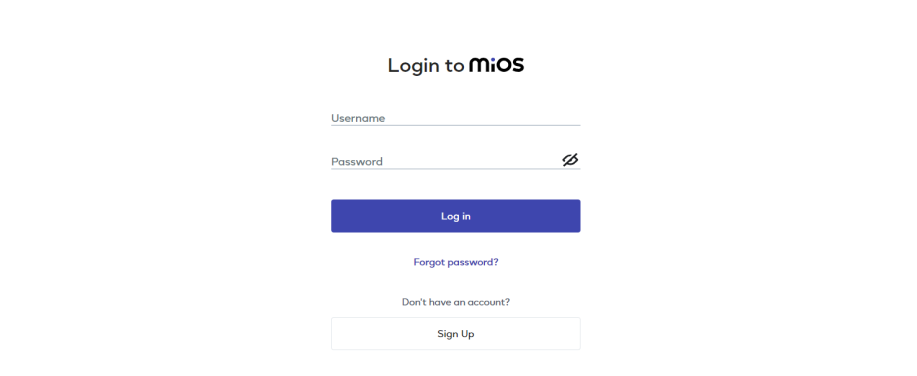
- Use the same credentials to log in that you used for configuring the controller with the web flasher.

- Here, as seen in the MiOS web app above, we can see the Luminosity sensor and dimmer tile. The above figure indicates that very little amount of light is being detected by the sensor as the intensity of light is controlled using the slider as seen above.

- Here, as seen in the MiOS web app above, we can see the Luminosity sensor and dimmer tile. The above figure indicates that a high amount of light is being detected by the sensor as the intensity of light is controlled using the slider as seen above.

eZlopie Products A single-channel 5V relay module $00.00

eZlopie Products Momentary switch $00.00

eZlopie Products Level Shifter Module (BSS138) $00.00

eZlopie Products ESP32
$00.00

eZlopie Products AC Lamp and Holder
$00.00












